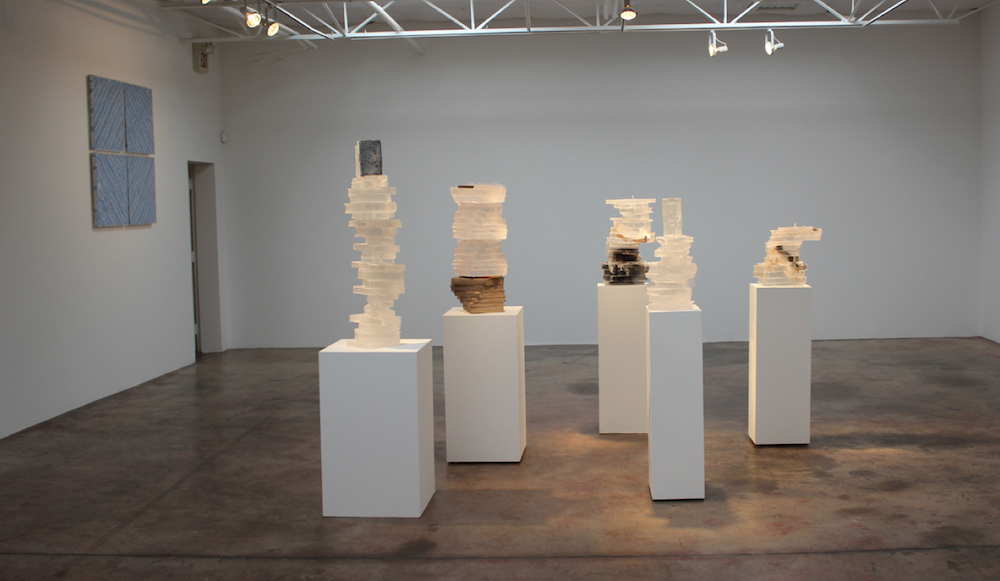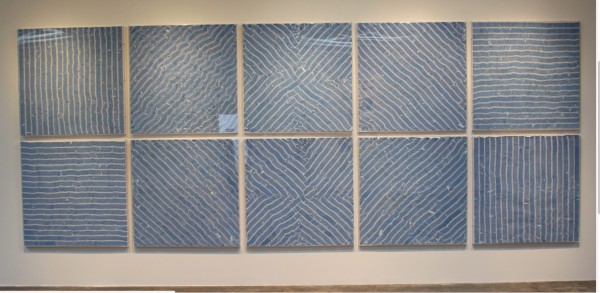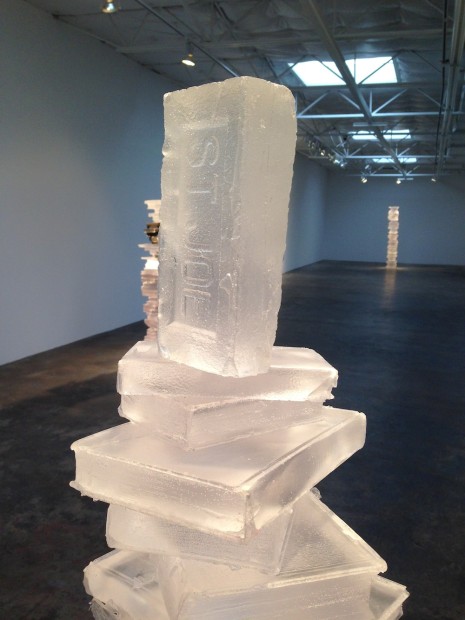
There is a great deal of pathos in Joseph Havel’s Stacks at Talley Dunn Gallery, Dallas. Books cast in resin and books cast in bronze rise up in randomly stacked, tottering columns. The form is the antithesis of the resolute verticality, uniformity, and effect of the classical architectural order. Given that these are stacks of books being represented, we can only guess at the intended relationship between the form of the piles and the putative content therein. It’s all pretty makeshift and guaranteed to inspire more speculation than reason, especially since there are a few “rogue” items to be seen embedded in the cast resin elements. But maybe that’s the point that Havel is trying to make here: to draw the line between sculpture that depends for its force on the borrowed glory of its constituent parts and sculpture that demands more of the artist and the spectator alike. This suggests to me that Havel’s Stacks is more than mummified book knowledge or off-the-cuff remarks about commodification. These are works that refuse to accept what we might call the postmodern settlement of contemporary art; the tacit understanding that every object or process in the world may enter into art without so much as a raised eyebrow or a challenge to its relevance.

HOPE and Desire (2013)—a roiling visual field composed by packing thousands of shirt labels face to face so that we only see the multitude of edges and a slight cast of light blue—strikes me as the cool, calm center of the exhibition. Arrayed in shallow Plexiglas boxes, the patterns in HOPE and Desire are coaxed nonchalantly out of the label-stacking process. What appears to be a faintly ridiculous version of Frank Stella’s Jasper’s Dilemma and other geometric configurations that could represent generic versions of 1970s formalist painting may be read off the surface. We may just be hallucinating, because there is no way of knowing for certain if Havel has simply gotten caught up in the sheer joy of playing with these labels or if he is intent on driving home the point that “empty is as empty does” when it comes to certain well-travelled roads of sculpture. Is this a knowing wink in the direction of yet another postmodern revision of Minimal Art? I can’t make up my mind, so I’ll consider a third option, which is that Havel’s work is more serious and complex than that, but carries the burden of understanding that the freedom accorded the contemporary artist comes with a price. The gravity and grandeur that one expects from the “classical” in art can’t be introduced into the contemporary without its debilitating sidekick, bathos. We all know that. But where does this leave the artist? I think Havel’s answer is that we are still improvising among the ruins of a lost idea about art that turns out to be as idealized as our image of ancient Greece and Rome. The only hiccup in an otherwise powerful exhibition is the Judd Stacks (2013), which is too close to the dismal irony of Rodney Graham. Poor Judd has been “domesticated” to Marfa and back; Havel doesn’t need to add to that sad spectacle to make his mark. He’s already proven that the deadpan is well and truly dead.
Joe Havel: Stacks will be on view at Talley Dunn Gallery in Dallas through March 29, 2014.
Michael Corris is professor of art at SMU and editor of a new series for Reaktion Books, London: “Art Since the ’80s.”




1 comment
I agree with Michael but Dallas was never a city full of hate.